Randy Weisser asks the experts how to distinguish between Intermediate and Great Egrets.
WBCP member Randy Weisser asks this month’s bird identification question. The three bird experts consulted are:
- Oriental bird specialist Desmond Allen
- BirdTour Asia Director Robert Hutchinson
- Bird guide and blogger Mark Villa
Randy Weisser asks:
Its always a challenge for me to distinguish between the Intermediate and the Great Egret. The Kennedy mentions the black line of the gape extending beyond the eye. I have gone cross-eyed trying to determine whether the gape line extends beyond the eye on a constantly moving egret at 100 meters away. The other distinguishing mark given by Kennedy is the s-shaped neck versus the kinked neck. Using this criteria, almost every egret I have ever seen is a Great Egret, which I suspect is not the case.. Any tips from the experts on how to make this ID easier?
From Desmond Allen:
Trawling through the photos on the web for this article it is clear than many find egret identification quite a challenge ! :)There are two species that have yellow bills and all black legs out of the breeding season: Intermediate and Great. Intermediate like frogs and is usually found in rice fields while Great likes mudflats, but Intermediate can sometimes be seen on the shore, and Great is often in freshwater habitats too.Intermediate is the smaller, with males 5-10% larger than females, but you may not have a useful size comparison while you are watching. Typically Intermediate has a more rounded forehead, (see pic 16) but the feathers can lie rather flat (eg pic 20). The gape extends underneath the eye and often behind it, but hardly any further than the rear edge of the eye. The bill is not short but averages less of the overall head length than Great. The distance from the eye to the back of head is usually less than 2.5x the distance of eye to bill tip (eg pic 10). It often has a dusky tip, but Great can have that too, if it has stuck its bill in mud. The neck of Intermediate is shorter but that is not always obvious and they do vary in neck length, some with necks apparently not much longer than Cattle Egrets (pic 20), and others long enough to show the distinct kink typical of Great Egret (pic 19).
Great Egret is overall much bigger, and note that males are much larger than females – maybe 20% larger. So a very large egret with a smaller one could be a male Great with a female Great, or a Great with another species such as Intermediate. It has a much longer bill, the ‘eye-rear of head’ distance being 3x ‘eye-bill tip’ or more (see pics 4-7, 13). Great usually has a very flat, sloping forehead that extends out into the long bill. The gape extends well behind the rear of the eye, but you need to be sure that an apparent gape line is not just a crease in the feathers, and confirm the bare skin (see pic 3). The very long neck has a distinct kink (pics 6,7 ) unless it is extended (pic 4).
If you don’t get good views, and you are not sure of size, you may not be able to separate them (eg pic 8).
How do we distinguish first-year egrets from much older ones? Do their necks and bills get longer as they age? I don’t know. That is something for you guys to find out and tell me.
Most of these egrets have migrated back to north east Asia by late May but If you are looking at your egrets at that time they may have breeding plumage. Intermediate then has a black bill and yellow facial skin, and breast plumes. Great has a black bill with greenish blue facial skin and back plumes. Perhaps you can find an unknown breeding colony here in the Philippines!
Something else to look out for: there are two subspecies of Great Egret in east Asia, and sometimes they are split as distinct species. The one known in the Philippines is ssp modesta, which is the smaller form. The ssp alba has not yet been recorded in the Philippines but is larger than a Grey Heron and has yellow legs in non-breeding plumage.
The best advice for separating tricky species: look at them often and study them carefully. After the first 500-1000 you may start to see differences more easily.
From Robert Hutchinson:
The gape line extending beyond the eye is a sure way to tell that the bird is a Great rather than an Intermediate Egret and together with the flatter forehead and longer bill, gives the whole head and bill a much longer, streamlined and dagger-like profile than we see in Intermediate Egret. Of course we need to be close to the birds of have good optics to be able to see the details of the gape line so it is worth watching as many egrets as possible to get used to the distinctive shapes (in birding terminology ‘Jizz’) of the two species; Intermediate Egret has a nice evenly S-shaped neck curve and the whole bird appears quite stocky whereas Great Egret is more more elegant showing a longer neck in proportion to the body which always shows a strange ‘kink’ in the upper neck.
From Mark Villa:
The length of the gape extending beyond the eye is the surest way to ID them apart but you are right that it is almost hopeless to look that feature during flight.
When at rest, to me, the intermediate egrets have a shorter looking bill almost dagger length and often have a black tip. Great Egrets do have longer necks and tend to curve like a real S while Intermediate Egrets curve only slightly like an S or a smaller S.
Also I suspect habitat preference is a bit different. I could be wrong but like in Candaba I think there are more Intermediates and there are more Great Egrets in coastal areas like that of the Coastal Lagoon, Parañaque.
Click on any of the thumbnails below to view the photo in full size:
Click on play to view the photos as a slideshow:
[slideshow]

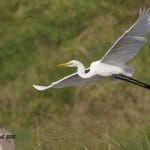

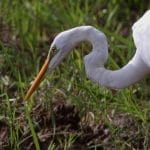

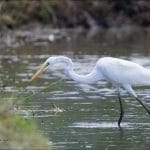




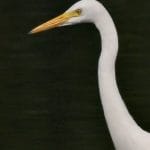
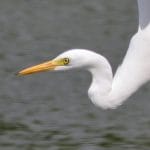
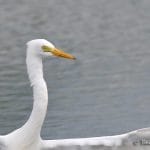

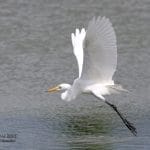



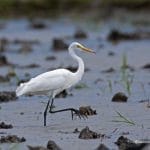

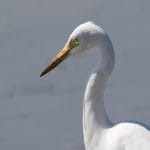

Amazing blog! Do you have any suggestions for aspiring writers?
I’m hoping to start my own site soon but I’m a little lost on everything.
Would you suggest starting with a free platform like WordPress or go for a paid option?
There are so many choices out there that I’m completely overwhelmed .. Any suggestions? Cheers!
Hi there! I’m glad you enjoyed this blog! I haven’t tried a paid option. I’ve only tried Blogger and WordPress. I prefer WordPress because I find it more flexible. Good luck on your blog! My suggestion is to read a lot. I think good writers are well read.
Sylvia eBON editor
Great Egrets are much larger and easy to distinguish from the Intermediate. However, size cannot be perceived from images. In that case gape is a good characteristic to arrive at a conclusion. Ironically, I captured image of an egret that possesses extended gape but has much shorter bill. Size wise it wasn’t very large. Now wondering what it is! Had it been possible, would upload the image here.